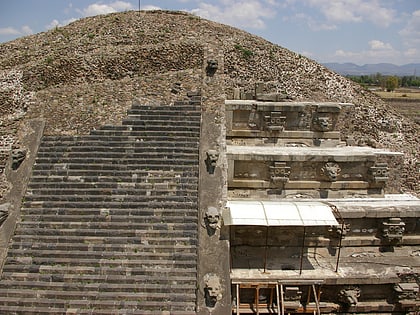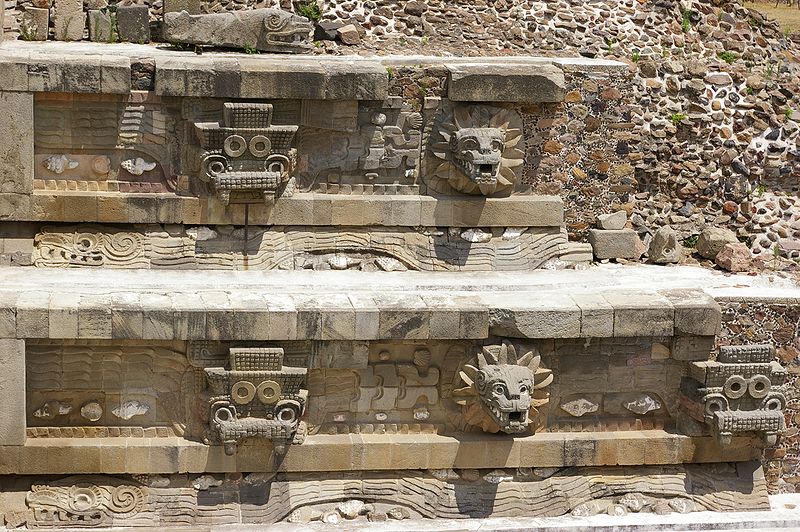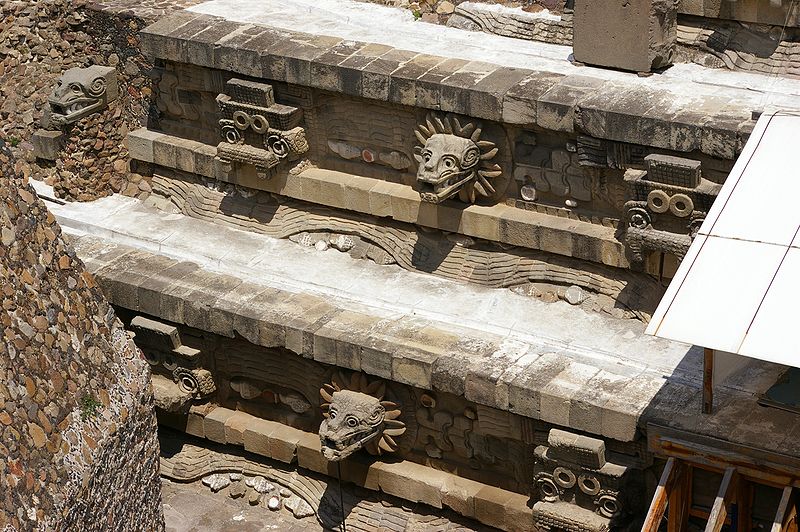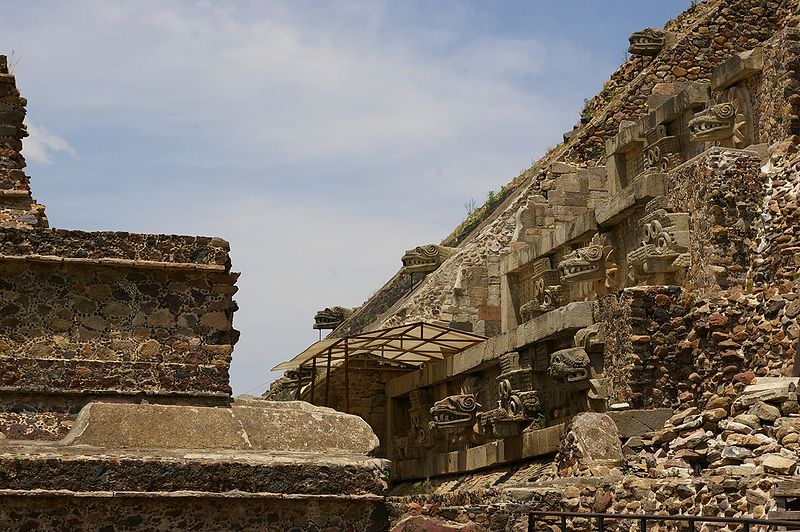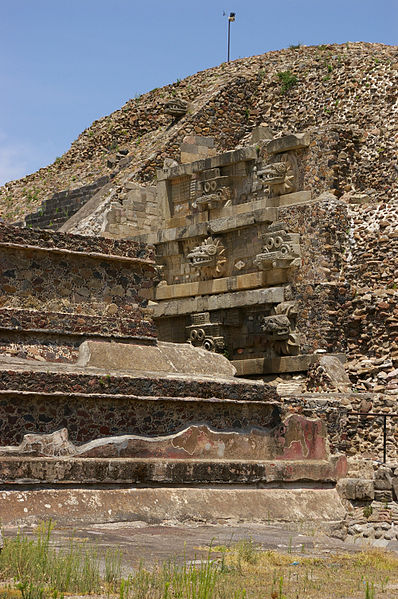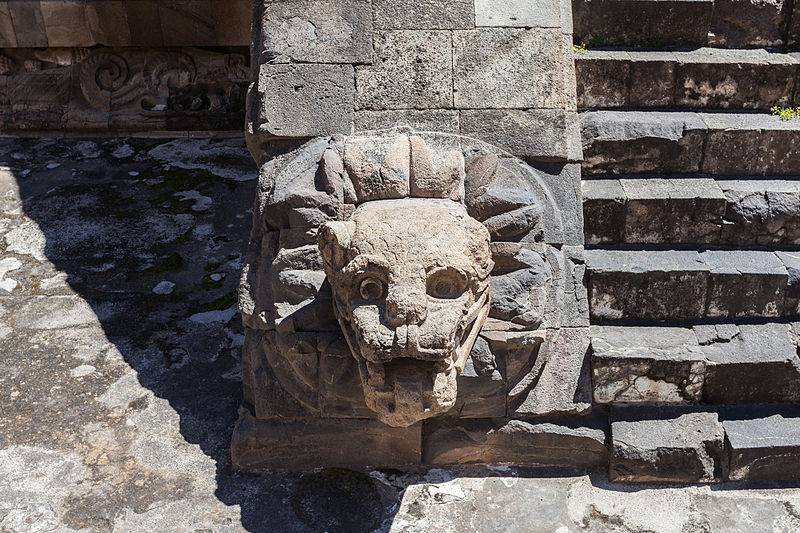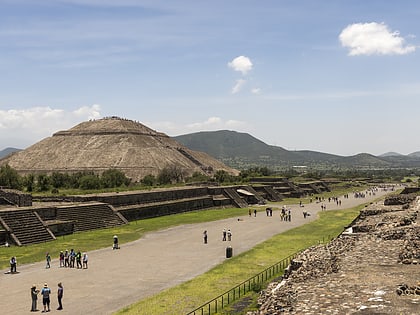Temple of the Feathered Serpent, Teotihuacan
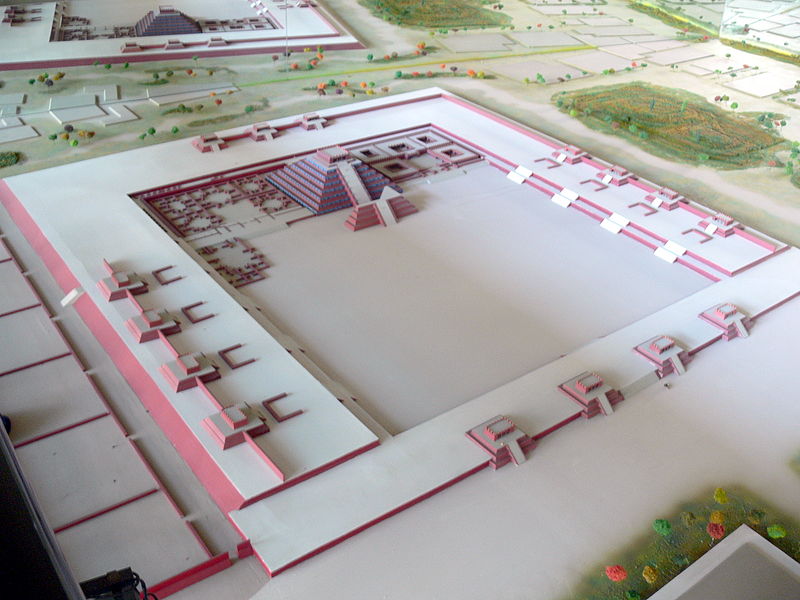
Facts and practical information
The Temple of the Feathered Serpent is the third largest pyramid at Teotihuacan, a pre-Columbian site in central Mexico. This structure is notable partly due to the discovery in the 1980s of more than a hundred possibly sacrificial victims found buried beneath the structure. The burials, like the structure, are dated to between 150 and 200 CE. The pyramid takes its name from representations of the Mesoamerican "feathered serpent" deity which covered its sides. These are some of the earliest-known representations of the feathered serpent, often identified with the much-later Aztec god Quetzalcoatl. "Temple of the Feathered Serpent" is the modern-day name for the structure; it is also known as the Temple of Quetzalcoatl and the Feathered Serpent Pyramid. ()
Teotihuacan
Temple of the Feathered Serpent – popular in the area (distance from the attraction)
Nearby attractions include: Pirámide del Sol, Pirámide de la Luna, Palace of Quetzalpapálotl, Teotihuacán.
